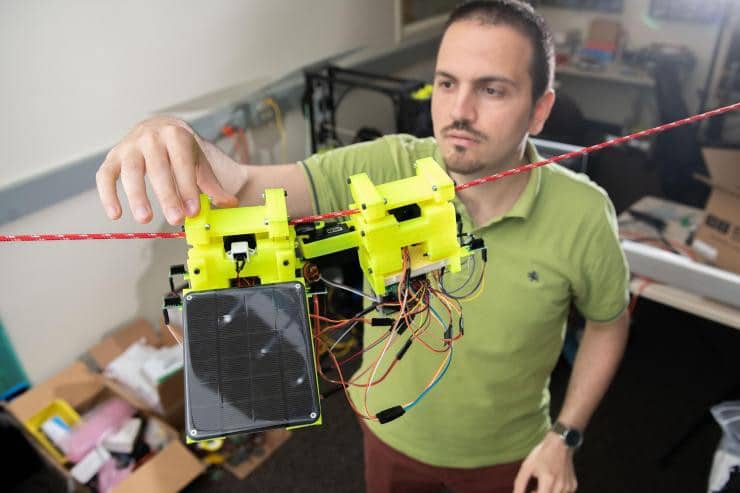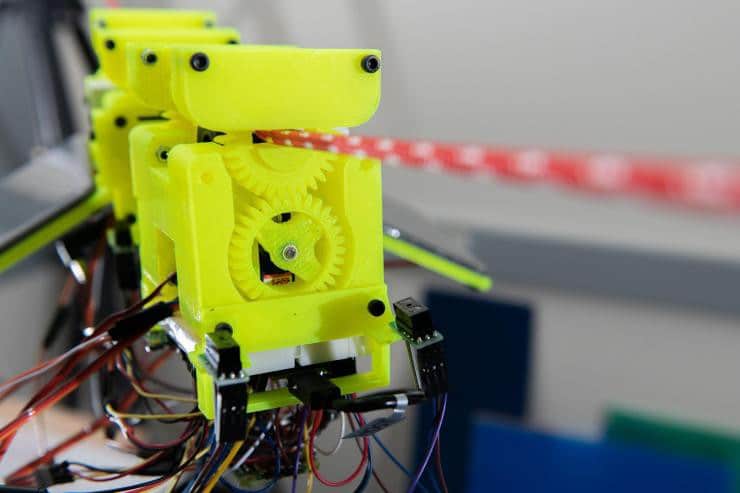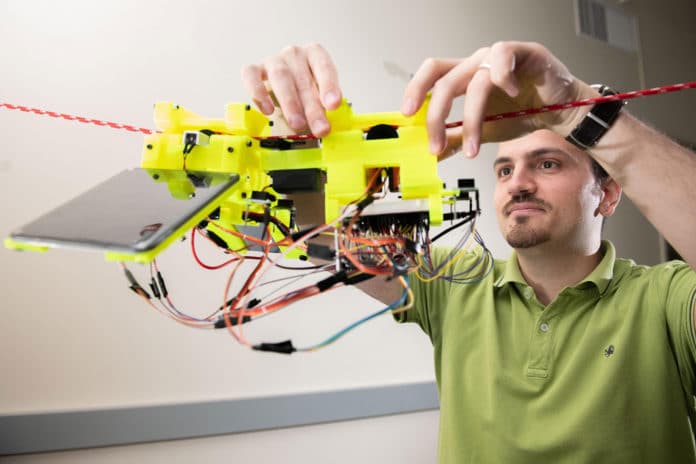Taking inspiration from the mammal that moves at a leisurely pace, a team of engineers from Georgia Institute of Technology has developed ‘SlothBot’ – a slow-moving robot which operates only when necessary. The energy-efficient robot supports the long-term surveillance tasks required in precision agriculture, infrastructure maintenance, security, and environmental monitoring.
“In robotics, it seems we are always pushing for faster, more agile, and more extreme robots,” said Magnus Egerstedt, the Steve W. Chaddick School Chair of the School of Electrical and Computer Engineering at the Georgia Institute of Technology and principal investigator for Slothbot. “But there are many applications where there is no need to be fast. You just have to be out there persistently over long periods of time, observing what’s going on.”
The SlothBot is powered by a pair of photovoltaic panels and designed to linger in the forest canopy continuously for months. It moves only when it must measure environmental changes like the weather and chemical factors in the environment, which can be observed only with a long-term presence.
Sloths are arboreal mammals famous for living life slowly. Modern tree sloths survive mostly on leaves found in the jungles of South America and Central America - a diet that offers very few calories. As they consume so few calories, they need to spend as little energy as possible throughout the day. That results in the slow movement that sloths have become known for.

Georgia Tech engineers have applied that same “theory of slowness” to a robot for environmental monitoring. The SlothBot’s job is environmental monitoring of jungle canopies. To do this, a robot needs to be able to stay up in the treetops for months at a time. That requires energy efficiency, which is why the engineers from Georgia Tech turned to the humble sloth for inspiration.
Most of the robots have the ability to move extremely quickly over uneven terrains and do something physically impressive. But, while those robots may be impressive, that doesn’t mean they’re suited to every task. Many jobs require a more subtle approach.
How does it work?
This energy-efficient robot consists of two bodies connected by an actuated hinge. Each body houses a driving motor connected to a rim on which a tire is mounted.

The structure of the Sloth-inspired robot is 3D-printed, which makes the robot look more like a sloth. It houses electronic components like sensors to monitor environmental conditions, solar panels to recharge the robot’s batteries when needed, and the motors and control components that allow it to move.
SlothBot is designed to hang suspended from wires for long periods of time while consuming very little power. When necessary, it can slowly drive along those wires. The robot is even capable of moving from one wire to another intersecting wire, so it can navigate through the treetops. That makes SlothBot uniquely capable of monitoring conditions in the very same jungle canopies that sloths themselves inhabit.
“It is great to see a robot inspired by the biology of sloths,” Egerstedt said. “It has been fun to share how sloths and other organisms that live in these ecosystems for long periods of time live their lives. It will be interesting to see robots mirroring what we see in natural ecological communities.”
SlothBot’s first test will likely occur in a cacao plantation in Costa Rica, where Egerstedt says sloths already use a network of cables used to transport crops as a “sloth superhighway.”
Scientists described the proof-of-concept hyper-efficient robot at the International Conference on Robotics and Automation in Montreal. The research is published in IEEE Robotics and Automation Letters.
